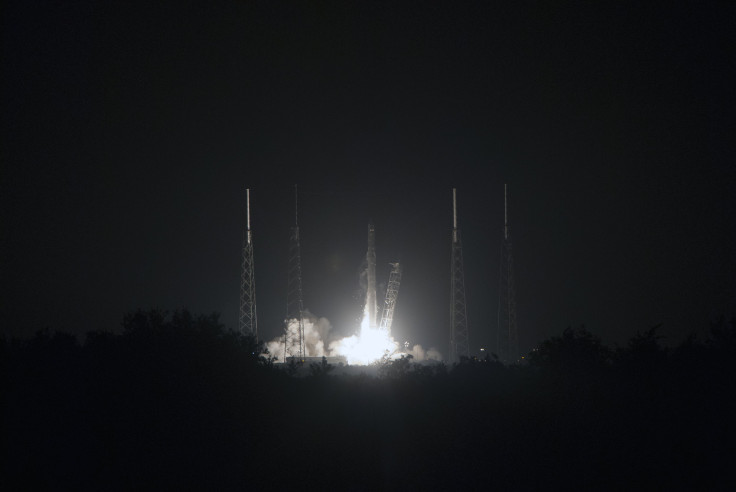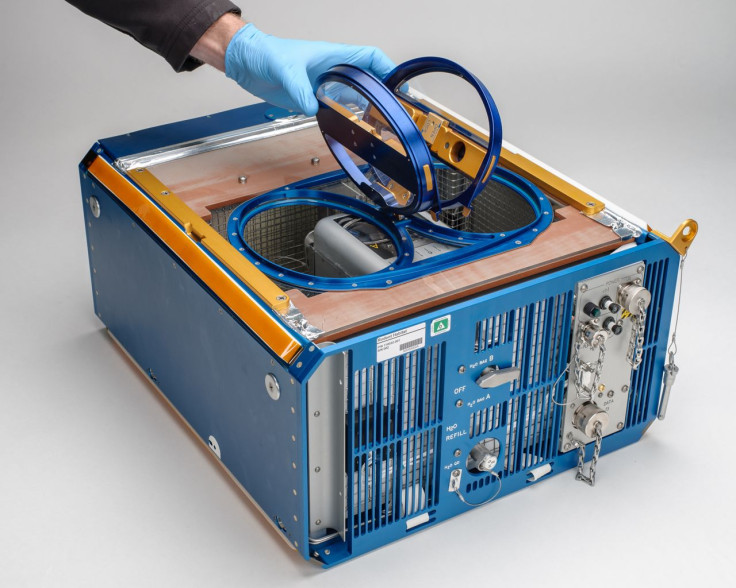SpaceX Launch: Dragon Spacecraft Is Carrying Mousetronauts, Flies And More To The Space Station

After a weather delay, SpaceX successfully launched its Dragon spacecraft on a mission to the International Space Station Sunday. The spaceship lifted off from Space Launch Complex 40 at the Cape Canaveral Air Force Station in Florida and will make it to the space station Tuesday.
The launch took place at 1:52 a.m. EDT. Within minutes, the Dragon spacecraft was headed into orbit. “From what I can tell, everything went perfectly,” Hans Koenigsman, SpaceX vice president of mission assurance, said in a NASA statement. Dragon will link up with the space station Tuesday. The process of grabbing the spacecraft with the ISS’ Canadarm2 robotic arm will be led by NASA astronaut Reid Wiseman and European Space Agency astronaut Alexander Gerst.
Dragon is carrying close to 5,000 pounds of cargo, including food and supplies for the ISS crew members, as well as scientific instruments. The space station will receive the first 3D printer ever sent into space. In addition, the ISS Rapid Scatterometer, or ISS-RapidScat, will be mounted to the exterior of the space station, where it will measure wind speeds by bouncing microwaves off the surface of the ocean.

The spacecraft is also carrying several biological experiments. The Biological Research in Canisters, or BRIC, experiment will study plant growth in microgravity. Fruit flies are also hitching a ride on Dragon as part of the Ames student Fruit-Fly Experiment. The fruit-fly experiment will study oxidative stress levels in the insects as harmful buildup in cells can lead to disease and infections.
As part of SpaceX’s fourth commercial resupply mission to the space station, 20 so-called mousestronauts will join the human crew Tuesday. The Rodent Research Hardware and Operations Validation, or Rodent Research-1, experiment will study the effects of microgravity on mice and the capabilities of the transporter, rodent habitat, and access unit hardware.

The next SpaceX launch takes place in December. Meanwhile, three Expedition 41 crew members will launch to the space station Wednesday, and the Orbital Sciences Corp. will launch the next cargo resupply mission Oct. 14.
The SpaceX commercial resupply mission launch Sunday can be viewed below:
© Copyright IBTimes 2025. All rights reserved.






















